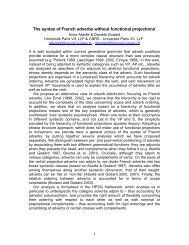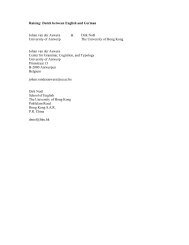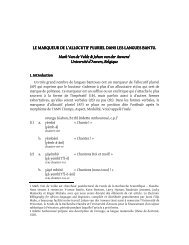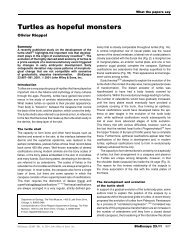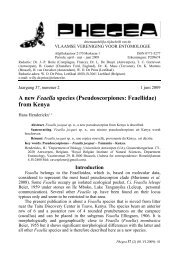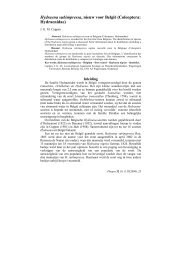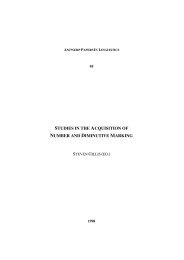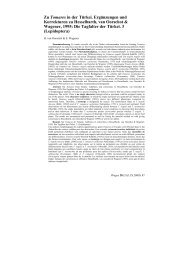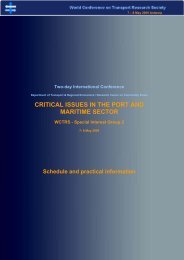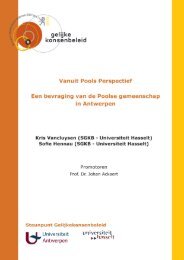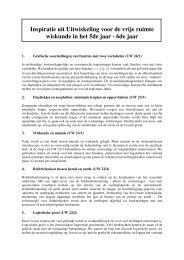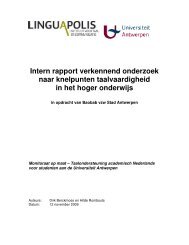Theodor2005.pdf
Theodor2005.pdf
Theodor2005.pdf
You also want an ePaper? Increase the reach of your titles
YUMPU automatically turns print PDFs into web optimized ePapers that Google loves.
Cebochoerid Deciduous Dentitions 165<br />
Fig. 3. Deciduous teeth of a. Dorudon atrox, UM 83902, buccal view<br />
dp3-4, photograph courtesy of Mark Uhen, b. Antiacodon pygmaeus,<br />
CMNH 53969, buccal view dp3-4. Scale bars denote 1 cm.<br />
Our data are based only on postcranial, dental, and cranial skeletal morphology, and<br />
do not include molecular or soft-tissue characters, as they cannot be scored for most taxa in<br />
this analysis, which is based primarily on extinct basal lineages rather than extant groups.<br />
Geisler and Uhen (2003) presented morphological support for the inclusion of whales<br />
within Artiodactyla using more characters from the base of the skull than we have used<br />
here, especially vascular grooves and foramina, that may be of great utility when they can<br />
be scored for more artiodactyl taxa. We have excluded some of the facial characters used<br />
by Geisler and Uhen (2003) because they appear to be correlated with body size in some<br />
artiodactyl groups. The introduction of allometric characters requires more morphometric<br />
analysis (Zelditch et al., 1995) before they can offer useful phylogenetic information.<br />
We coded 141 unordered characters from dental morphology (including deciduous<br />
dentition where known), the skull, and the axial and appendicular skeleton. The character<br />
list is shown in Table I and the data matrix in Table II. Phylogenetic analyses were performed<br />
using PAUP ∗ 4.0b10 (Swofford, 2001), under the parsimony criterion, using heuristic search<br />
algorithms with 1000 random taxon addition sequences and TBR branch swapping, rooted<br />
using Arctocyon as an outgroup. Bootstrap and decay analyses were performed to assess<br />
node support. Bootstrap analyses used heuristic searches, random addition sequences, and<br />
TBR branch swapping over 100 replicates. Bremer decay indices (Bremer, 1994) were<br />
calculated using PAUP ∗ command files generated by TreeRot (Sorenson, 1999) using the<br />
same parsimony settings as the original analysis.<br />
RESULTS<br />
Deciduous Dentitions of Cebochoerids<br />
The upper and lower deciduous incisors, canines, and first premolars are not yet<br />
known for any cebochoerid taxa. The specimens are shown in Figs. 1, 2, and 3, and cusp<br />
identifications are shown in Fig. 4.



